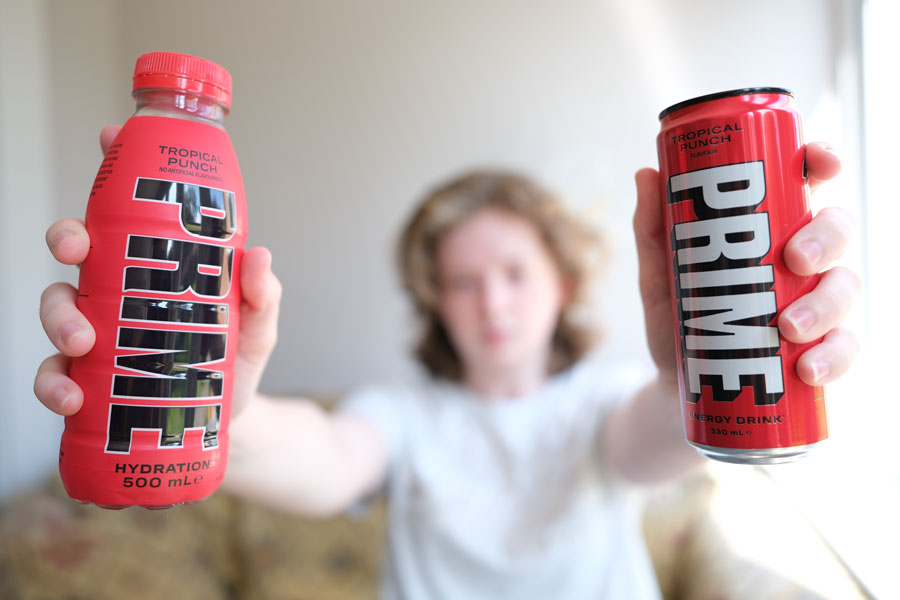Logan Paul’s Prime Drink Sales Collapse in U.S. and U.K. as Consumer Hype Fades

NEW YORK, NY – According to newly released financial figures, Prime’s U.K. revenue fell by nearly 70% from approximately $142 million in 2023 to between $42 million and $49 million in 2024. Gross profits in that market dropped over 85%, from about $27.5 million to just over $4 million. Pre-tax profits also tumbled more than 90%, landing in the range of $400,000 to $470,000.
Sales in the U.S. haven’t fared much better. Prime’s domestic revenue declined by around 40% in the first half of 2024, due largely to falling customer retention and reduced interest among first-time buyers. Analysts say the brand’s early momentum, fueled by celebrity endorsements and social media buzz, is proving hard to sustain in a highly competitive beverage market.
In response, Prime executives have acknowledged that the company has moved past its “hyper-growth” phase and is now undergoing a strategic review aimed at stabilizing and repositioning the brand. As part of this shift, the company recently launched a new product called Prime Ice – a lower-calorie hydration drink intended to attract a broader range of health-conscious consumers.
Prime is also facing legal and operational hurdles. In 2023, bottling partner Refresco filed a $67 million lawsuit against the company, alleging that Prime failed to meet contractual volume requirements. That case was ultimately dismissed on jurisdictional grounds. A separate dispute with ingredient supplier Agrovana is ongoing, with both parties filing competing lawsuits over alleged unpaid invoices and breach of contract.
Retailers, particularly in the U.K., have reportedly been forced to discount and clear excess Prime inventory as demand softened significantly by the end of 2024. Once known for selling out in minutes and fueling resale frenzies, Prime drinks are now readily available – often at clearance prices.
Adding to the brand’s challenges, Prime has faced growing scrutiny from regulators and lawmakers over the marketing of its caffeinated beverages to minors. U.S. Senate Majority Leader Chuck Schumer has publicly criticized the drink’s high caffeine content, calling it a “cauldron of caffeine.” Countries like New Zealand and Latvia have already banned certain Prime Energy products, and others, including the Netherlands, have implemented restrictions.
Search interest and online engagement around the brand have also dropped sharply, reflecting a broader loss of momentum. Marketing experts note that while Prime successfully leveraged the star power of its founders to capture attention, it may be struggling to establish the kind of lasting consumer loyalty needed for long-term success in the beverage space.
At its peak in 2023, Prime claimed to generate over $1.2 billion in global sales. But the rapid decline in revenue and brand visibility in 2024 has led many to question whether it was built for longevity or simply the product of fleeting social media hype. As competitors and consumers look elsewhere, Prime’s next moves could determine whether it can recover – or become another cautionary tale of internet-fueled overexposure.
Top Questions About Prime’s Sales Collapse and What It Means for the Brand
What is happening to Logan Paul’s Prime drink brand?
Prime is seeing a major drop in sales and profits in both the U.S. and U.K. markets. In the U.K., revenue fell by nearly 70% in 2024. In the U.S., sales declined around 40% during the first half of the year.
How much did Prime make before the decline?
At its peak in 2023, Prime generated more than $1.2 billion in global revenue, driven by aggressive influencer marketing and high consumer demand.
Why are sales declining so rapidly?
The hype that initially fueled Prime’s success is fading. Analysts say fewer repeat buyers, slowing social media engagement, and overstocked shelves have all contributed to the downturn.
What is Prime doing to recover?
The company has launched a new drink called Prime Ice, which is a lighter version of its hydration line. Prime is also undergoing a strategic review to refocus its brand for long-term sustainability.
Are there legal issues involved?
Yes. Prime has faced lawsuits from business partners, including a $67 million suit from bottler Refresco and another legal dispute with supplier Agrovana. The Refresco case was dismissed, but the Agrovana litigation is ongoing.
Is Prime still popular in stores?
No longer to the same degree. Retailers in the U.K. have been discounting Prime products and clearing excess inventory. The drink, once hard to find, is now readily available—often at marked-down prices.
Is the caffeine content in Prime causing concern?
Yes. U.S. Senate Majority Leader Chuck Schumer and health officials have raised concerns about Prime Energy’s high caffeine levels and its appeal to minors. Some countries have taken regulatory action.
Is Prime being pulled from store shelves anywhere?
Yes. Countries like New Zealand and Latvia have banned or restricted certain Prime Energy drinks due to caffeine concerns. The Netherlands and others have issued warnings or imposed temporary blocks.
How are consumers responding now?
Search interest and online buzz have dropped significantly since 2023. The decline in visibility suggests that consumers may be moving on to other options in the crowded beverage space.
Can Prime bounce back?
It’s possible, but the brand faces a steep uphill battle. Without the viral hype that launched it, Prime will need to prove it can compete on product quality, pricing, and long-term customer loyalty.


